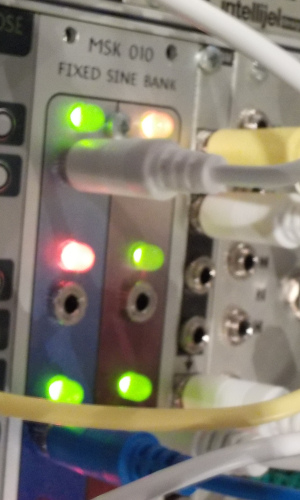Monday 9 August 2004, 12:01
Okay, it's been about two months since I posted my piece about colourful bits, and
I really should have posted a follow-up before now, but better late than
never. First of all, here are ten other places that carried the story, in
no particular order:
Thursday 10 June 2004, 11:54
As of Summer 2024, my article "What Colour are your bits?" has been
online 20 years, and people are still linking to it as a benchmark. It's
clear that people still care about intellectual property in general and
copyright in particular, and the difference, if any, between identical
copies of things is still important; but the most salient issues today are
not directly related to the verbatim copying that was a big deal in 2004 and
was the main topic of "What Colour." I've written other articles about
today's issues, and I wish my more recent articles would get the attention
that the 20-year-old one still commands; they are more relevant now.
In particular, people in 2024 care a lot about how intellectual property
issues and "creator's rights" relate to material that is not actually
created by humans - like the output of so-called "generative
AI." I talk about that in some detail in my article on training and
copyright on the Eleven
Freedoms site. I don't think the copyright issues associated with
generative models are actually so new after all, and they are best
understood using the existing concept of fair use. Copyright holders worry
about how to exercise control over the use of "their" creative material for
training models; but that begs the question of whether copyright holders
ever had, or should have, a right to any such control. If a human can read
a book and learn from it, and then write their own books, why shouldn't a
computer?
Another of my recent articles, possibly my most important one ever,
discusses two conflicting points of view somewhat like the views of
"computer scientists" and "lawyers" below, but in the realm of institutional
hiring and promotion. That is my 2021 piece on Scarcity, abundance, and lost
careers. The difference between "lawyers" and "computer scientists"
might be said to reflect a difference between abundance and scarcity:
recognizing that a work can be copied at effectively zero cost makes works
plentiful, whereas extending ownership of the original to ownership of all
copies greatly reduces the supply of works, and then either view has
important consequences. Similarly, institutions that see promotion
candidates as being abundant or scarce will operate differently from each
other and will have difficulty comprehending each others' points of views.
The tension between scarcity and abundance leads to dysfunctional situations
like the "elite overproduction" currently eating up some North American
cultures; I think there's a way to understand that and several other current
issues in a consistent framework.
Now, the historical article on Colour.
There's a classic adventure game called Paranoia which is
set in an extremely repressive Utopian futuristic world
run by The Computer, who
is Your Friend. Looking at a recent LawMeme
posting and related discussion, it occurred to me that the concept of
colour-coded security clearances in Paranoia provides a good metaphor for
a lot of copyright and intellectual freedom issues, and it may illuminate
why we sometimes have difficulty communicating and understanding the
ideologies in these areas.
An article based on this one and its follow-ups, by me, Brett Bonfield,
and Mary Fran Torpey, appeared in the 15 February 2008 issue of
LJ, Library
Journal.
